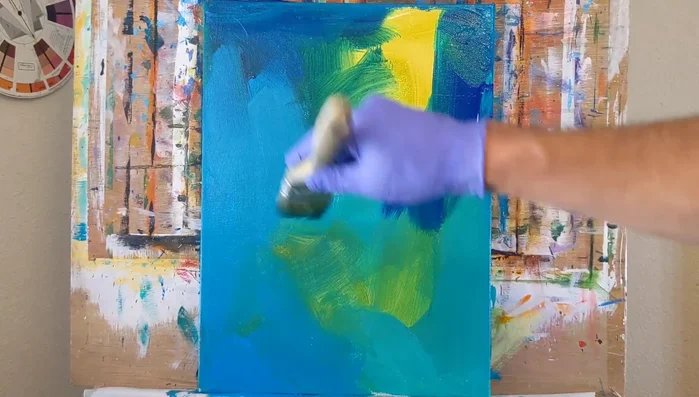Abstract painting offers a boundless playground for creativity, allowing artists to express emotion and concept through vibrant colors and dynamic forms. This unique approach transcends traditional representation, focusing instead on the interplay of texture, color, and shape to create visually arresting pieces. One fascinating technique involves the strategic use of wax pastels, their waxy resistance offering a compelling counterpoint to the fluidity of layered paints. This creates a fascinating interplay between the hard, carved lines of the pastel and the soft, blended washes of paint.
This article will delve into a step-by-step guide to mastering this captivating technique, demonstrating how to carve shapes directly into the wax pastel underpainting, creating unique textures before layering acrylics or oils to build depth and complexity. Prepare to unlock a new dimension in your abstract art journey as we explore the exciting possibilities of this multifaceted method.
Preparation and Safety Guidelines
- 12x16in canvas
- various blue, green, and yellow paints
- white water-soluble wax pastel
- 2-inch paintbrush
- pallet knife
- smaller paintbrushes
- Catalyst wedge
- filbert brush
- soft graphite stick
- Wax pastels can be messy. Protect your work surface with newspaper or a drop cloth and wear clothing you don't mind getting stained.
- Oil-based paints and solvents should be used in a well-ventilated area. Avoid inhaling fumes and wear a respirator mask if necessary.
- Always allow layers of paint to dry completely before applying subsequent layers to prevent smudging and blending where you don't intend to.
Step-by-Step Instructions
Prepare the Canvas
- Create a colorful background by layering different blues, greens, and yellows on the canvas.

Prepare the Canvas Sketch the Shapes
- Sketch out abstract shapes on the wet background using a white water-soluble wax pastel.

Sketch the Shapes Apply Base Coat
- Use a large paintbrush to broadly paint over the sketched shapes with a light base color (mix of aqua green, Payne's gray, and white).

Apply Base Coat Texturize with Pallet Knife
- Use a pallet knife to scratch into the painted surface, revealing the underlying colors and creating texture.

Texturize with Pallet Knife Add Color and Contrast
- Introduce additional colors (bright aqua green, lime green, Brilliant Blue, Windsor blue, cadmium yellow, light olive green, and Vermilion) to further define the shapes and add contrast.

Add Color and Contrast Blend and Refine Colors
- Blend and layer colors within the shapes, using a filbert brush for smooth transitions and maintaining some areas of bright, contrasting color.

Blend and Refine Colors Define Edges
- Refine the shapes' edges using a soft graphite stick to create a defined border.

Define Edges
Read more: 7 Top Paint Color Trends for 2024: A Complete Guide with Free Downloadable Resource
Tips
- Use colors that blend well together to create a harmonious effect.
- Experiment with different brush sizes and tools (pallet knife, Catalyst wedge) to achieve varied textures and effects.
- Don't be afraid to make mistakes; unexpected results can add interest to the painting.
- Consider adding contrast by introducing warmer colors (like Vermilion) to complement the cooler tones.
- Work on several canvases with the same color palette to explore different painting possibilities.






